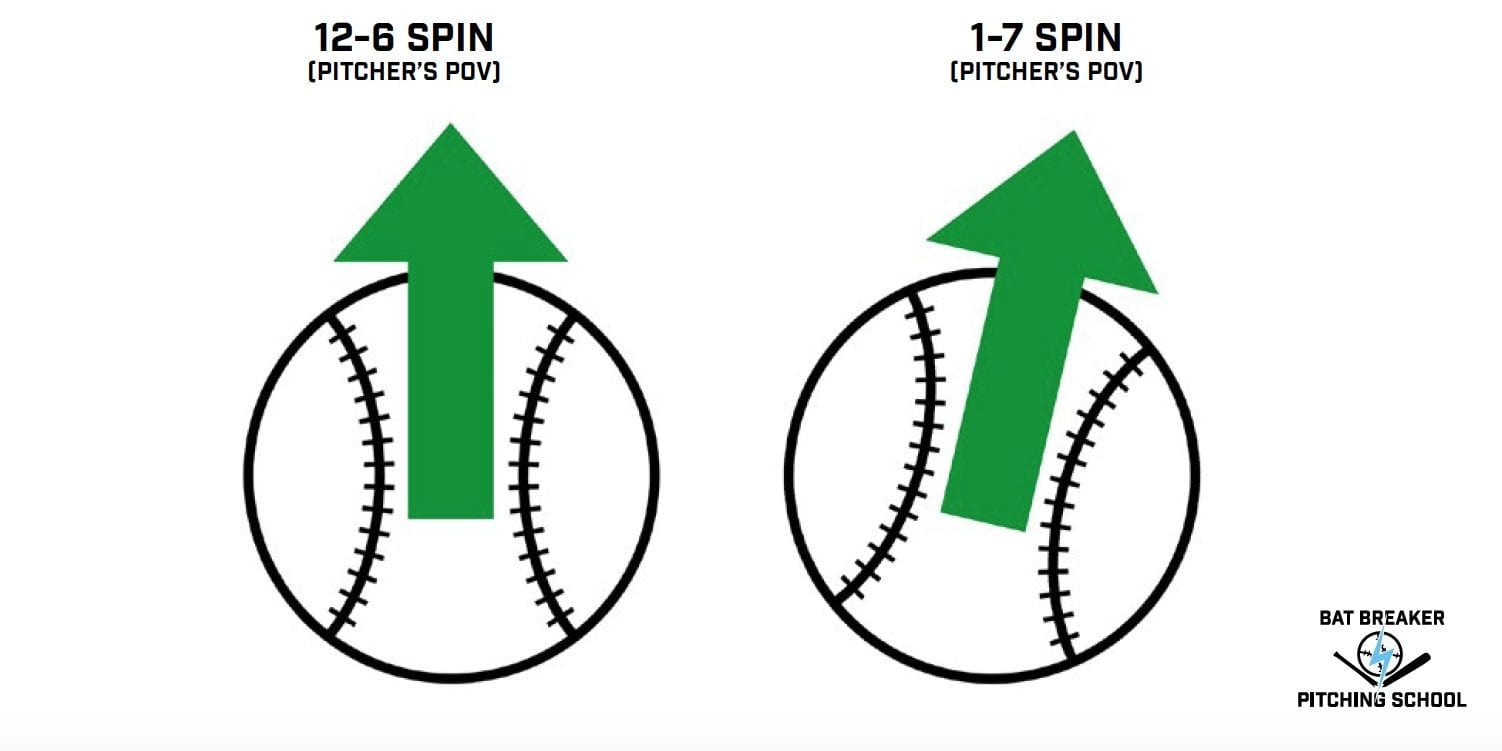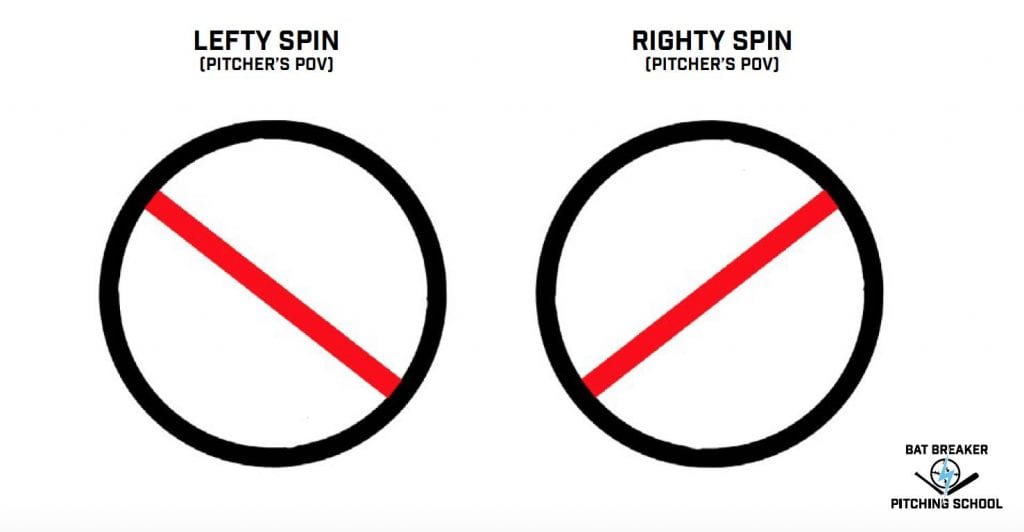*This article may contain product links which pay me a small commission if you make a purchase. Learn more.
Throwing a sinker can be confusing and frustrating for pitchers. It’s a difficult pitch to learn and there are a lot of myths about it. But, if you’re here to learn how to throw a sinker, I’m going to send you on your way with a lot of answers.
How do you throw a sinker? The main key is finding a grip that allows the ball to be tilted inward slightly. Some sinkers fly through the air and get their movement from “seam shifted wake,” a concept brought mainstream by baseball researcher and physicist Barton Smith.
Depending on mechanics, arm slot, hand action, the sinker grip, and other factors, a sinker may be very easy to develop, or very hard. There are a few myths involved, including how a 2-seamer differs from a sinker.
First: Learn About Fastball Spin
My video about fastball grips and spin is important – be sure to watch it.
We’ll dive into all of these topics in this article. And if you’re looking for a great pitching book that dives into this concept and many more, check out my book Pitching Isn’t Complicated.

Don’t forget – great pitching mechanics make learning a new pitch MUCH easier. If you need pitching drills, watch my detailed pitching drills video here.
If you want to learn a ton about every step in the pitching delivery, read my very detailed, thorough article on pitching mechanics here.
Skip Ahead to Any Section
Read on or jump around!
Myth #1: The Sinker Grip You Use is Crucial
Reality: The Grip Doesn’t Matter That Much.
A MAJOR misconception in how to throw a sinker is that the grip is oh-so-important. Think of a pitch-grip like a saw. Put a saw in the hands of a bunch of high school kids in shop class, and they’ll make bird houses and other assorted junk. But, give a saw to a carpenter, and he’ll build you a house.
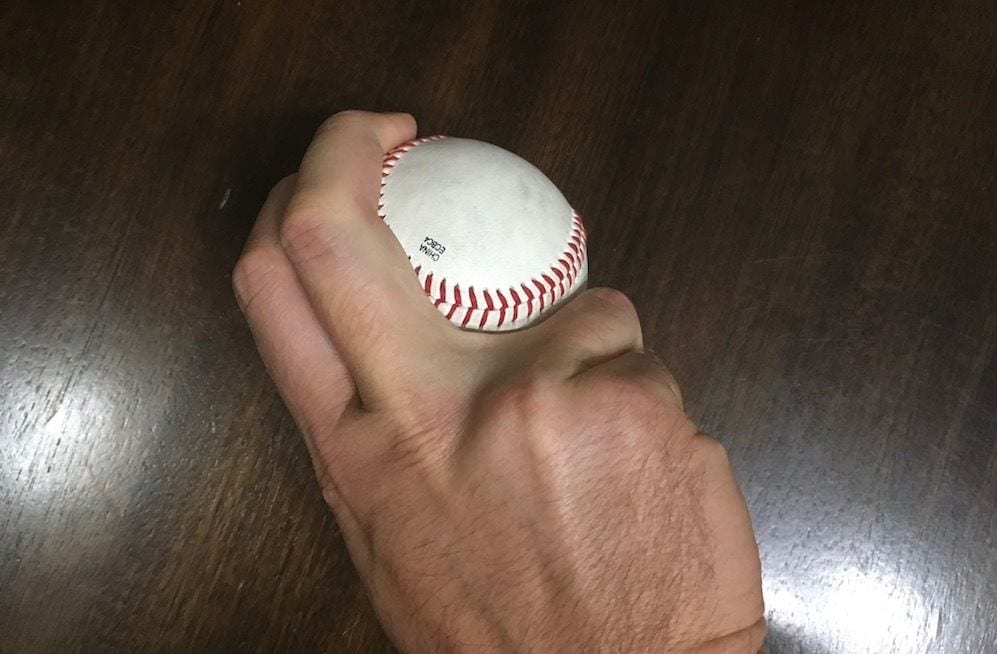
If you’re not sure what a sinker looks like, check out Zach Britton’s below. His grip is the same as any other pitcher’s, but his sinker is unbelievable (which is evidence for my statement that the grip isn’t that big of a factor).
The curveball grip? Basically the same whether you’re a little leaguer or a Major Leaguer. Ditto with the slider, cutter, changeup and sinker. There are little variations of each, but the way the pitch is thrown is by far the most important factor.
The grip is merely a tool to impart spin on the ball, and spin forces the ball to break the way the pitcher wants. Because the spin of each pitch is what matters most, most grips are in essence naturally selected for – the best grips have been figured out long ago, and are mostly uniform across the board.
How to Throw a Sinker like Zach Britton
Watch this short video of Zach Britton, who throws the most unhittable sinker on the planet – he candidly explains that the grip he uses to throw his All-Star caliber sinker doesn’t work for most guys. It’s a mixture of the grip, the unique way he throws, and other factors. He is SPOT-ON with this statement.
So, Which Grip Should I Use?
Keep reading, we cover this in a bit.
Myth #2: A Sinker Is Different Than a Two-Seamer.
Reality: Each describes the action, not the intention.
Basically, if you throw a two-seamer that merely runs (arm-side lateral movement), then it’s a two-seamer. But if you throw a two-seamer that has significant sinking action, we call it a sinker.
The sinker is basically a two-seamer. If it sinks a lot, we call it a sinker. If not, we just refer to it as a two-seamer. It’s a weird convention, but the reality is that there’s no distinction between the two pitches in our intention of throwing them, as every pitcher hopes his two-seamer both runs and sinks.
The Two Seamer is NOT A Solution for Every Pitcher
Two-seamers are sometimes revered by coaches and the attitude is that they’re useful for every pitcher.
This is NOT the case – most pitchers who try to throw a sinker or two-seamer will get minimal movement, and when that happens, they’re much better off throwing a four-seamer.
Pitchers should tinker with two seam fastballs and sinkers, sure – but if a pitcher really can’t make it move after lots of coaching and practice, then the pitch should be scrapped for a four-seamer.
Learn more in my video below.
At the end of the day, if you’re trying to learn how to throw a sinker that really gets results, a step-by-step process is important. Don’t overlook your drill progression, throwing routine and catch partner, all of which are discussed in my course.
Why A Sinker Sinks: What You Need To Know.
If you throw the pitch with all the pressure directly through the center of the baseball, it will have relatively “clean” backspin (spin about one axis) at the angle of your arm-slot. This will create some arm-side run, which is a great result. It may produce a little bit of sink, but likely not a lot. This will basically produce a two-seamer.
To get the heavy sinking action (making it a sinker), some of the finger pressure must be applied to the inside edge of the baseball, “pronating” ever so slightly as the ball leaves the finger tips. This will reduce the overall spin rate of the ball because you’re applying a mixture of spins, and applying less backspin, which helps the ball sink.
This mixture of spin (or a one-seamer type grip) can produce a “one-seam” orientation as it spins, which makes the ball look like the illustration below, with a thick red seam spinning at an angle.
Lower Spin Rate = More Sink
On a four-seam fastball, a higher spin rate (measured in RPMs) means the ball resists gravity more and produces more fly balls and swings and misses. This result is because the brain of a hitter basically guesses wrong about where the ball will end up, guessing incorrectly that it will be lower than it will be. He thus swings below the ball, popping it up, or missing altogether.
With a sinker, we want the opposite – a slower spin rate means the hitter’s guess will be higher than the pitch, which results in him hitting the top half of the baseball. The lower spin rate does not resist gravity, so it falls at a rate faster than that of a fastball with faster backspin.
Angled Spin Axis = More Sink & Run
Pitchers with lower arm slots can more easily create run and sink, because the ball will naturally come out of the hand without 12/6 backspin. In the photo below, you can see that the “backspin” Sale will produce will be angled more like 10/4 rather than 12/6 or 11/5 (for him as a lefty). Because this spin axis isn’t parallel with the ground, it can’t resist gravity (more on this below).
When the spin axis is not parallel with the ground (as in a lower arm angle), the backspin cannot produce lift on the ball, because the spin is not directly opposing the angle at which the ball will fall due to gravity.
Think of it in terms of an airplane – a plane couldn’t take off if the wings were angled heavily on the runway, because the high-pressure zone produced underneath the wings wouldn’t be pushing directly upward on the plane to lift it – it would push at an angle.
So, because this angled backspin does not help lift the ball, it sinks more. And if you want the best chance at throwing a great sinker, a lower arm-slot helps. Should you lower your arm-slot just to make your sinker better? Probably not, but just be aware that if you’re a high-over-the-top thrower, it will be much tougher to sink the ball.
Sinker Tip 1 | Tinker Then Settling on a Good Grip
Pick a grip. Throw it a lot to a trusted catch partner, get feedback, assess and then try a new grip. The video below is a great start.
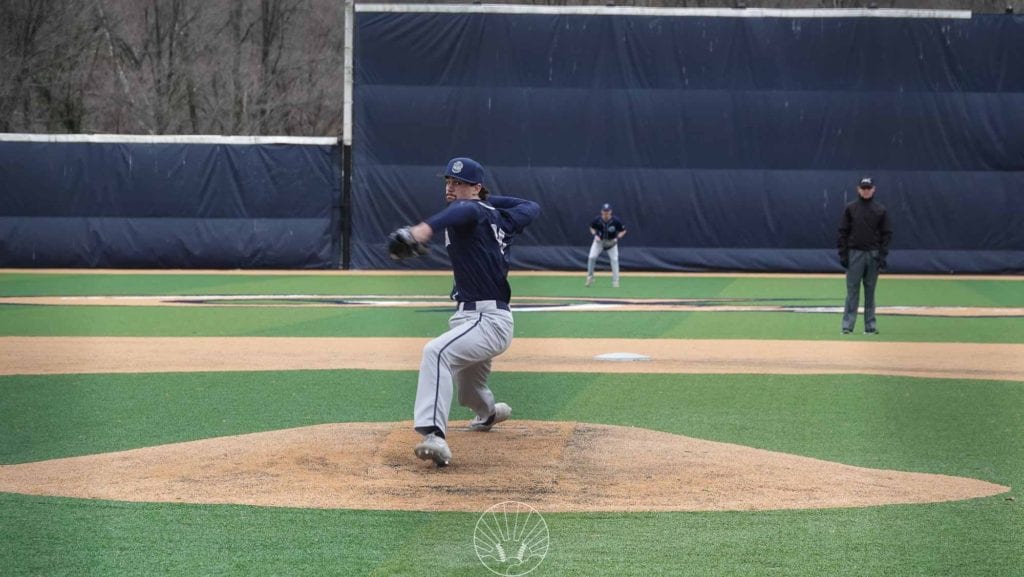
In Myth #1, we talked about how the grip isn’t that important. But, the grip does matter in the sense that you need to select a grip which allows YOU (the unique snowflake that you are) to accomplish the task of making the ball sink.
Which grip allows you to best accomplish this? It will take trial and error.
Sinker Tip 2 | Getting to the Top of the Ball
We discussed how angled spin helps lower the overall spin rate, which produces less lift on the ball and makes it sink. But, to apply this angle to the spin, you must get your fingers slightly to the inside of the ball.
However, the goal is to not have to consciously do it, but rather let the grip do it for you.
Find a grip that works for you, where your natural throwing motion delivers your hand more to the inside of the baseball. Actively trying to pronate (the motion of pouring out a can of soda) will make the pitch behave more like a changeup, taking too much speed off it, and often resulting in poor control of it.
Most amateur pitchers struggle to get to the top of the ball and force it on an ideal downhill plane toward the plate. Focusing hard on feeling for the top of the baseball during catch, flat-grounds and bullpens is really crucial. If you need tips on playing better catch, I’d suggest reading this article.
Sinker Tip 3 | Finishing Hard With a Full Follow-Through
Many pitchers tend to leave a little on the table, not completely finishing their pitches. Accelerating the arm at 100% through release is crucial – do not aim, guide or push the ball – throw it 99-100% as hard as you possibly can. Babying the pitch means you’ll both throw it with reduced velocity and reduced spin.
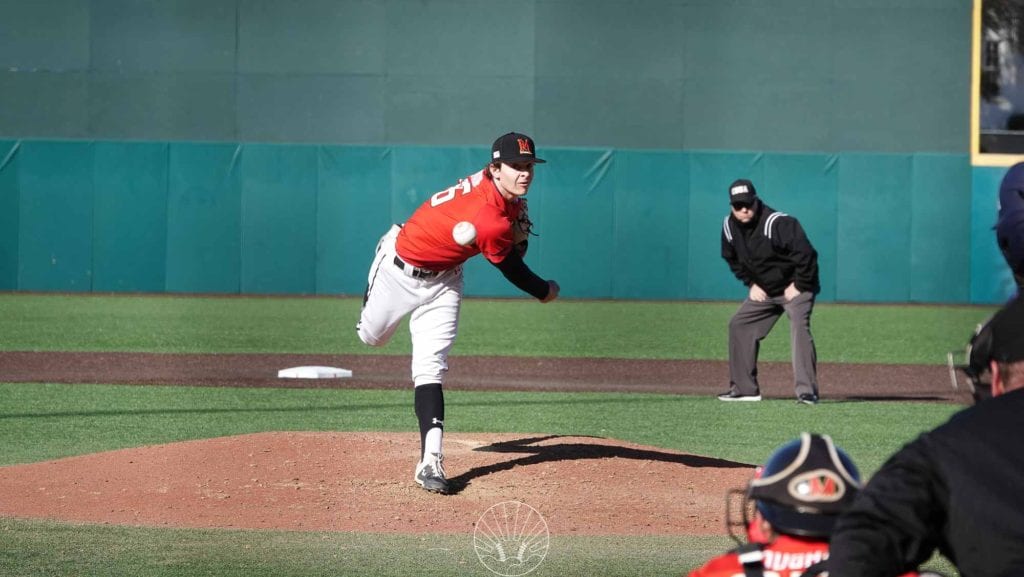
But wait – don’t we want a reduced spin rate? Yes, but not because we eased off it. Rather, we want to reduce the spin rate by applying spin on the inside of the ball, which we accomplish by choosing a good grip and finishing each pitch hard.
Sinker Tip 4 | Moving the Chest and Torso Toward the Plate
There are myriad reasons for using the torso to deliver the arm toward the plate – by transferring power from the legs, through the torso, then to the arm and hand, we use our whole body and don’t overstress just the arm. Pedro Martinez is a good example of driving his torso forward to the catcher.
When pitchers don’t use their torso well, meaning that they stand more upright than they should at release, they leave velocity on the table and compensate by spinning, rotating more than they need.
The hips will rotate on their own, but what we want to think about is moving the chest toward the catcher. If a pitcher does this, it will be vastly easier for him to deliver his hand to the top and inside of the ball to apply the spin that he needs.
If you need to improve this, check out the video above.
If you’re struggling to learn how to throw a sinker, don’t forget about your mechanics – they’re a big piece of the puzzle and the drills above can help.
Sinker Tip 5 | Feel it, Get Good Feedback & Throw it Often
The “feel” of your sinker is critical–this is your connection with the baseball and how it leaves your fingers. Developing feel means throwing it a LOT in pregame, practice and in bullpens.
And, you need a good catch partner who can help you with feedback. This means telling you when one is good and when one isn’t so good.
No pitch can be developed without two crucial components:
- High repetitions – practicing it over and over with a HIGH level of focus
- Focus on how the pitch feels leaving the fingertips
- Getting feedback from a trusted source
Basically, you need to throw it over and over and over to someone who can tell you when it sinks more or less, or looks good or bad. Then, when they give you feedback, you combine that with how the pitch felt leaving your hands, and then try to replicate the feeling of a good sinker, and NOT repeat the bad sinkers. That’s the process, and there’s nothing glamorous about it – it takes time, focus and attention to detail.
Seam-Shifted Wake: What Is It and Why Does it Matter?
Baseball researcher and physicist Barton Smith has brought the aerodynamic concept of seam-shifted wake (SSW) into the forefront of baseball pitch flight. Listen below for more on this concept, as SSW pitches have unique movement.
If you’re a baseball geek, the podcast episode above is a really interesting listen.
Be sure to check it out and see what’s happening in the world of pitch aerodynamics!
More Pitching Resources
Looking for more information on pitching mechanics and other pitches? You’re in the right place:
Grab a Copy of My Pitching Book below:

- My BEST Article on Pitching Mechanics – Every Step in the Delivery
- How to Throw a Curveball
- How to Throw a Nasty Changeup
- How to Throw a Slider
If you want a step-by-step method to throw a better sinker, check out my online course. You’ll learn a method that will take you from start to finish.

How to Throw a Sinker FAQ
How do you grip a sinker?

To throw a good sinker, first you need a proper grip. Your index and middle fingers should be close together, slightly on the inside of the ball. A one-seam grip is best, where both fingers are placed on top of a single seam. The fingers and hand will pronate slightly on the inside of the ball, producing a slightly tilted or diagonal spin that causes the ball to sink and not resist gravity as well.
How does a sinker work?
Sinkers don’t have backspin with an up and down orientation, which resists gravity. Rather, sinkers are tilted with spin applied to the inside of the ball, which means the ball will not resist falling back to earth like a fastball with good, pure backspin.
What's the difference between a sinker and a slider?
A sinker is a fastball variation that has slight armside movement–called “run”–and sinking action. A slider is a type of breaking pitch in baseball that moves toward the pitcher’s gloveside of the plate with diagonal break.
Is throwing a sinker bad for your arm?
Nope! It’s no worse than any other type of fastball. ASMI research has proven that fastballs put the most stress on the arm because of their high velocity, but there is nothing about the sinker that makes it any more stressful than any other pitch. Throw it and be confident in it like your regular fastball, but remember that pitching is inherently dangerous and injurious–practice good arm care, don’t pitch too often and visit ASMI and MLB’s Pitch Smart website for more information on keeping your arm healthy.
What is a sinker pitch?
A sinker is a fastball that has downward, sinking movement. It’s thrown at the same speed as the four-seam fastball but typically comes out a little bit slower by 2-3%. Sinkers are great for getting hitters to hit the top-half of the pitch, thus creating lots of easy-to-field ground balls and double plays. Sinkers help a pitcher keep the ball in the ballpark, as ground balls never become home runs at high levels of baseball.
Leave a Comment Below!
Thanks for reading!
Coach Dan
